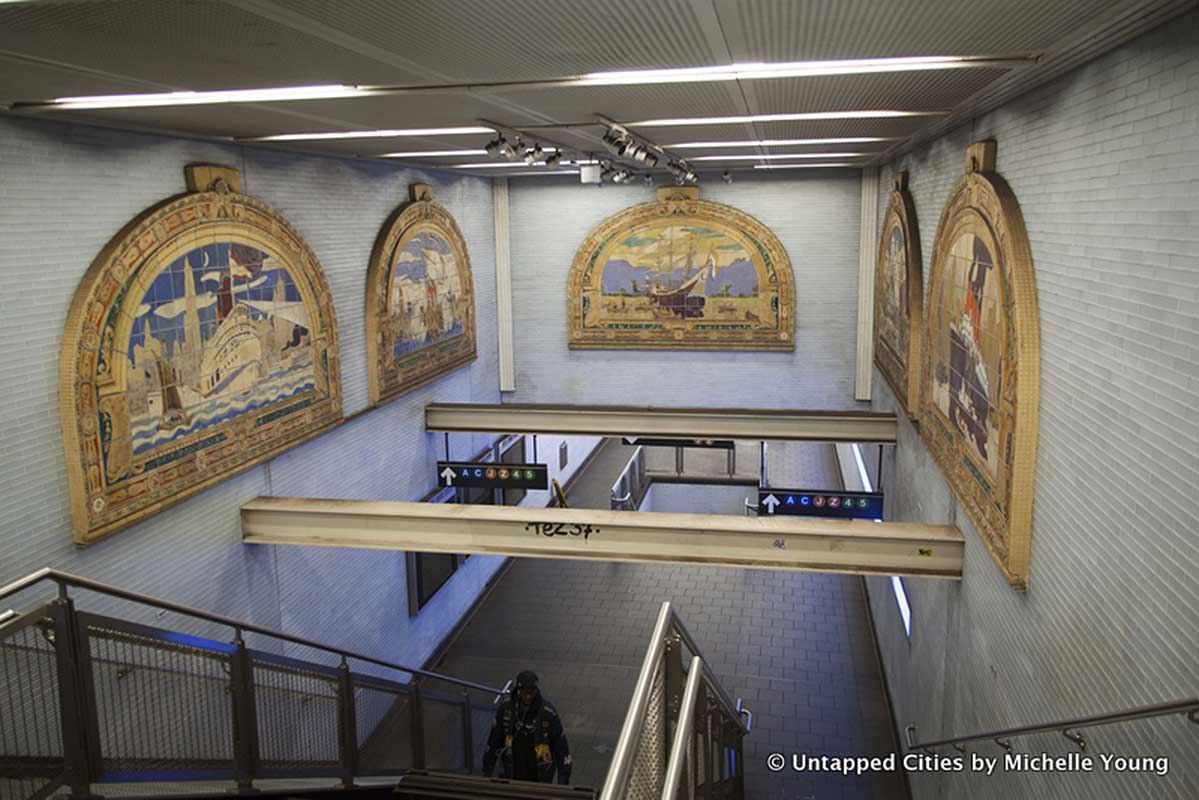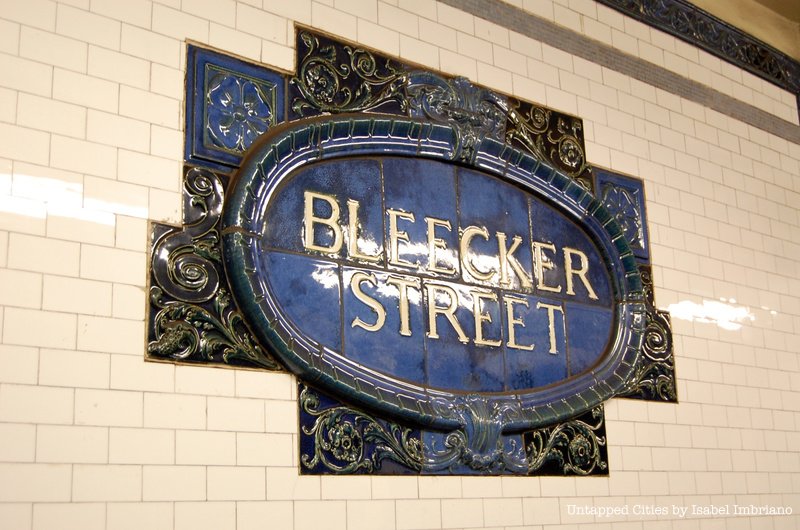
As riders of the New York City City, we’re all familiar with the rats and supposed mole-people, the trash and mold, and have come to ignore–or accept–the many unpleasantries of the NYC subway. What we often forget is that the MTA had originally planned for a ride on the subway to be a luxurious experience, as evidenced by the glorious (and decommissioned) City Hall subway station. By combining art and technology, New Yorkers back in 1904 had high hopes for their new underground.
The original Interborough Rapid Transit Company pulled in artists to create civic works specifically to enhance the subway experience. At the time of the international Arts and Crafts Movement, architects and artists designed ceramic ornament for subway signage. The signs not only announced the name of the stop, but planners also hoped that color, design elements, and eventually illustrations would be recognizable by non-English speakers so that they could orient themselves. Most of the tile designs were done by Heins & LaFarge (1901–1907) and Squire Vickers (1906–1942).
There are constantly additions being made by artists, local schools, and others, but we’re sharing with you some of our favorite original Arts and Crafts/Beaux Arts-style ceramics from around when the subway first opened in 1904. For more on subway art, we’re also hosting our first NYC Subway Art walking tour this weekend, May 13th. Join us for the event:
Behind-the-Scenes Tour of NYC Subway Art
1. Bleeker Street

You’d be sad to miss these cobalt blue faience tiles ornate with scrollwork and paterae at the ultra-modern Bleecker Street station.





